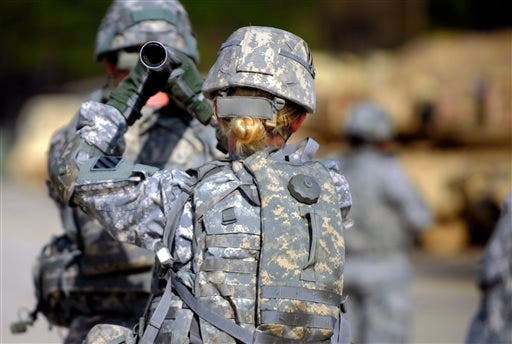Sports
Tony White out to beat his alma mater: UCLA vs. Nebraska five things to watch

Tony White could have easily been coaching from UCLA’s sideline on Saturday instead of standing across the field.
Nebraska’s defensive coordinator was among the candidates for the job opening that went to DeShaun Foster, a teammate of White’s for three seasons when the latter was a Bruins linebacker.
One of those pushing for White’s candidacy was Nebraska coach Matt Rhule, who has his own UCLA connection. Rhule was the Bruins’ defensive line coach during the 2000 season, when both White and Foster were on the team.
“I thought Tony would have been an excellent, excellent choice,” Rhule told Nebraska’s “Sports Nightly” program in February. “Martin Jarmond, the A.D. there, I had a chance to speak with him. I don’t want to lose Tony at all, I love Tony, I want him to coach here forever, but there’ll come a time when he has an opportunity to become a head coach. And he deserves that.”
White’s defense at Nebraska ranks among the top 20 in the country in several categories, including yards allowed per game (301.9, No. 16), points allowed per game (18.1, No. 18) and rushing yards allowed per game (98, No. 12).
Foster momentarily fooled reporters this week when asked how well he knew White and Rhule.
“Don’t know them at all,” Foster deadpanned.
Didn’t he overlap with them at UCLA?
“Nope, not at all,” Foster continued, before finally relenting. “Yeah, I played with Tony for three years and Matt Rhule was our [defensive line coach], so I know them pretty well. It was fun to see coach Rhule at Big Ten media [day] and he coached for the [Carolina] Panthers too, so that was exciting. And then Tony was a linebacker here, so we had a few battles on both sides of the ball.”
White could have something special in store for the Bruins in a rematch of sorts after getting beaten out by his old friend earlier this year.
Here are four other things to watch when the Bruins (2-5 overall, 1-4 Big Ten) face the Cornhuskers (5-3, 2-3) starting at 12:30 p.m. PDT at Memorial Stadium in Lincoln:

Sports
Ranking Juan Soto’s free-agent suitors: Which team will sign him? And for how much?

Three weeks into this MLB offseason, two questions dominate the discussion across the sport:
Which team will sign Juan Soto? And for how much?
The Soto sweepstakes are heating up. Five teams — the Mets, Yankees, Dodgers, Red Sox and Blue Jays — have met with Soto and his agent, Scott Boras, to make their initial pitches. A sixth team, the Phillies, is expected to sit down with Soto soon, and more could follow.
The teams know they have a chance to sign a generational player who is just entering his prime. They also know it’ll cost them.
Soto’s contract is expected to break records in terms of both average annual value and present-day value (as calculated for luxury tax purposes), but not surpass the total amount of Shohei Ohtani’s heavily deferred 10-year, $700 million deal with the Dodgers from last offseason.
Sources with the involved teams believe the Soto contract will end up being $550 million to $650 million, depending on the structure of the deal, and 10 to 15 years, depending on luxury tax impact and other factors that could benefit the team in terms of length.
(For comparison’s sake, keep in mind Ohtani’s $700 million deal had a net present value of $460 million for luxury tax purposes because of all the deferrals. The next largest contracts in MLB history were Mike Trout at $426 million, Mookie Betts at $365 million and Aaron Judge at $360 million.)
I predicted a 15-year, $622 million contract when I finalized my top free agent ranking in late October. I believed Soto would get $622 million because he is only 26, has one of the best hit tools the game has ever seen, and should age well. Fifteen years makes sense when you consider many superstar players have signed deals that run until they’re at least 40, even though the backends of those contracts rarely work out well for the teams.
Those are eye-popping numbers, but they’re really not surprising given the player.
A player who will be entering his age-26 season. A player who has already been to two World Series. A player who is comparable to Ted Williams with 40-home run power.
Sure, Soto is only adequate defensively in the outfield — though he was a Gold Glove Award finalist this year — but he has a strong and accurate arm. Sure, he doesn’t possess blazing speed or get good leads, but he is a smart, instinctive base runner.
He’ll go down in history as one of the best on-base percentage players of all time. His bat plays at the highest level against the best pitching. His penchant for the dramatic is well-documented. All the cliches apply: He wants to be at the plate in the biggest moments, on the biggest stages — and he’s proven he’ll perform, as he demonstrated with a sensational walk-year season in New York that included a three-run homer that propelled the Yankees to their first World Series in 15 years.
May we once again re-introduce, The Generational, Juan Soto. pic.twitter.com/6R5fWpEg6I
— New York Yankees (@Yankees) October 20, 2024
After the World Series, Soto followed the Boras script to a T when he spoke to the media.
“I don’t know what teams want to come after me, but definitely, I’ll be open to this and every single team,” Soto said. “I don’t have any doors closed or anything like that. I’m going to be available for all 30 teams.”
Soto said he was open to any team, even if that might not be the case, because that’s the best way to get the best offer, and it’s surely what his agency advised. If a player wants a particular destination, Boras and his lieutenants don’t want anyone to know until the end of the process, so they can maximize the offer, let all the teams that are in the bidding think they have a chance — and then when they get the best offer — go back to the team the player prefers and ask for its best and final offer.
Boras has always counseled his star clients to wait until free agency to sign to maximize their value, and that strategy is poised to pay off handsomely for Soto, who turned down $440 million from the Nationals in 2022 before he was eventually traded to San Diego.
His agency has almost always recommended players take the most money and years — for themselves and their families but also to grow the market for future free agents. While some have suggested Soto prefers to play on the East Coast, during free agency he’s indicated he’s open to the West Coast. Several in the industry familiar with Soto and his camp believe he will take the biggest offer, with the most money and years trumping geography. The best opportunity to win championships could be a deciding factor among those he’ll consider. With the belief that the top teams will be willing to commit the dollars it takes to land him, in the end Soto will choose exactly where he wants to play.
At the start of this offseason, I thought about one-third of the teams in the league would make a serious bid for Soto. Things can change in the coming weeks, but at this point, I believe there are only six or seven legitimate landing spots for the four-time All-Star: the Mets, Yankees, Dodgers, Phillies and Red Sox — who I view as the most likely destinations — followed by the Blue Jays and maybe a team that’s yet to emerge. All of those named teams should have the resources to make a deal, and all but the Blue Jays should be contending or within striking distance of perennial contenders over the next several years.
Alex Rodriguez is flanked by his agent, Scott Boras (left), and Rangers owner Tom Hicks after signing a record 10-year, $252 million contract with Texas in 2000. (Tom Fox / Getty Images)
Boras has a long history of surprising the baseball world with free agent landing spots, like when Max Scherzer signed with Washington, Iván Rodriguez signed with Detroit and Alex Rodriguez broke the bank with the Rangers. If an unexpected team emerges and decides to outbid the field, there’s a chance Soto will accept the offer. It’s just tough to see that scenario unfolding, especially because that team would need to beat out so many big-market behemoths.
But in my four decades working in MLB front offices, I learned it only takes one wild-card owner to change the free-agent landscape, one owner who’s willing to shatter records to land a franchise player for their club.
Another variable to consider in all of this: The Boras Corporation represents many of the top free agents — and they are intermingled and can affect each other. For example, Boras also reps first baseman Pete Alonso. Let’s say, for illustrative purposes, Soto has six teams in contention and all are willing to bid in the $600 million range, but Alonso has only two teams that will bid in the $150 million to $200 million range and only one of those teams is also in on Soto. Then it might be best for the Boras Corporation and both of its clients if Alonso signs the best offer he can get but it also pushes Soto to one of his other five teams if the money he’s being offered is the same. Ultimately, the player makes the decision that’s best for him, but free agents’ markets can be connected and affect who signs who.
MLB’s Winter Meetings will be held next month at the Hilton Anatole in Dallas, the same hotel where Boras negotiated A-Rod’s record-breaking deal with the Rangers in 2000 and where Albert Pujols shocked the sport by signing with the Angels in 2011.
It’s easy to imagine Soto with Boras at the podium in Dallas a few weeks from now, announcing his next team and another ground-breaking deal. But which team’s cap will be on his head? Which fan base will be ecstatic?
When the dust settles weeks or even months from now in the race for the offseason’s most-prized free agent, who will win the Soto sweepstakes?
Soto said he was open to joining all 30 teams. Below, I’ve ranked the field of plausible contenders — including teams actively pursuing him, others monitoring his market, and still others that make sense as destinations and possibly could emerge — based on who is most likely to land him. (I left out roughly two-thirds of the league because those teams either aren’t engaged in Soto’s market or have no realistic chance of signing him.)
Here’s how I see the state of the Soto sweepstakes as of today.

GO DEEPER
Matchmaking the top 10 MLB free agents with the team where they fit best
The Big Five — teams with a legitimate chance to sign Soto

Juan Soto and Francisco Lindor could be teammates next year if the Mets outbid their crosstown rivals. (Jim McIsaac / Getty Images)
1. New York Mets
The Mets are my favorites to sign Soto because I believe if their owner, Steve Cohen, wants him, he will make the highest bid — offering the most dollars and years — and if he does that and no other team matches it, I think he’s getting his man. Cohen was the highest bidder last offseason for Yoshinobu Yamamoto before the Dodgers matched the Mets’ bid, and his offer two years ago to Brandon Nimmo (eight years, $162 million) far exceeded any other the outfielder had received.
2. New York Yankees
The tandem of Judge and Soto brought back memories of Ruth and Gehrig and Mantle and Maris — and rightfully so. Soto seemed at home in the Bronx. He loved the fans and the fans loved him. I think if the Yankees have the best offer on the table, or match it, there is a strong chance he returns. If they don’t sign Soto, expect them to immediately pivot to some combination of Anthony Santander, Christian Walker, Willy Adames and Tanner Scott.

GO DEEPER
Yankees’ Steinbrenner battles Mets’ Cohen for Soto: ‘I know what’s expected of me’
3. Los Angeles Dodgers
If I’m Soto, I’d sign with the Dodgers because they are positioned to build a dynasty. Can you imagine a lineup of Ohtani, Betts, Freeman and Soto for the next several years? My goodness. Beyond their overwhelming talent, the Dodgers have the resources and the culture that give Soto the best shot of winning in the short- and long-term.
4. Philadelphia Phillies
Phillies president of baseball operations Dave Dombrowski has a track record of signing star players. It’s always been a key part of his formula and how he’s won wherever he’s gone. I believe he has one more future Hall of Famer on his mind: Soto. J.T. Realmuto and Kyle Schwarber’s combined $44 million comes off the Phillies’ books after 2025; Nick Castellanos’ $20 million per year comes off after 2026. There is a pathway to make a Soto deal work financially by backloading the first couple of years of a 12- to 15-year contract. And, Phillies ownership — with Dombrowski and before he arrived — has shown it will play in the deep end of free agency and dish out record deals.
5. Boston Red Sox
The Red Sox know they made a mistake when they decided not to go all-in to keep Mookie Betts, and they’ve learned from their missteps in recent years. They appear to be serious players for Soto. They have one of the best farm systems in the game and payroll flexibility going forward. Their meeting with Soto went well, as they sought to convince him that the special talent in their system will allow them to spend on free agents and trade acquisitions over the next several years. Soto was impressed with that aspect of their presentation, according to a league source briefed on the meeting.
Five teams that could surprise

Toronto is one of three AL East teams that have met with Soto during free agency. (Nick Turchiaro / USA Today)
6. Toronto Blue Jays
The Blue Jays finished second in the Ohtani sweepstakes, and they have the resources to make the largest offer to Soto. They can sell him on representing a country — not just a city — but can they really convince him they’re positioned to win?
7. San Francisco Giants
The Giants have struggled over the years to land top position player free agents, but they were the highest bidder for Aaron Judge before the Yankees matched the offer and they were the highest bidder for Carlos Correa before nixing the deal over concerns about his medical records. Perhaps Buster Posey, their new president of baseball operations, might be able to convince Soto to sign with them — but this is a long shot, especially with a payroll reduction possibly on the horizon.
8. Washington Nationals
There could not be a better script for Nationals president of baseball operations Mike Rizzo than to trade Soto to San Diego for a Herschel Walker-type prospect package and then two and a half years later, re-sign Soto.
9. Houston Astros
Astros owner Jim Crane has historically been opposed to long-term contracts as he allowed both Correa and George Springer to depart over the length of the deal. He did extend Jose Altuve and is working to do the same with Alex Bregman. However, I think it’s more likely he focuses on extending Kyle Tucker than landing Soto.
10. San Diego Padres
If the late Peter Seidler hadn’t gotten ill, he might have completed a long-term contract to keep Soto in San Diego. However, that would assume Soto wasn’t focused on reaching free agency and he showed otherwise. It’s unlikely the Padres’ current ownership team would be willing to put another huge long-term contract on the books at this point, but I will never bet against A.J. Preller pulling off a surprise move.

GO DEEPER
Fifteen notable MLB players who could be traded this offseason

GO DEEPER
All-MLB team 2024: Ohtani, Soto only repeat winners as Bowden picks the best at each position

GO DEEPER
MLB front office check-in: Key offseason needs and goals for all 30 teams
(Top image: Dan Goldfarb / The Athletic. Photo: Mary DeCicco / MLB Photos / Getty Images)
Sports
Jake Paul’s business partner talks claims of rigged Mike Tyson fight, says Paul is boxing's 'greatest gift'
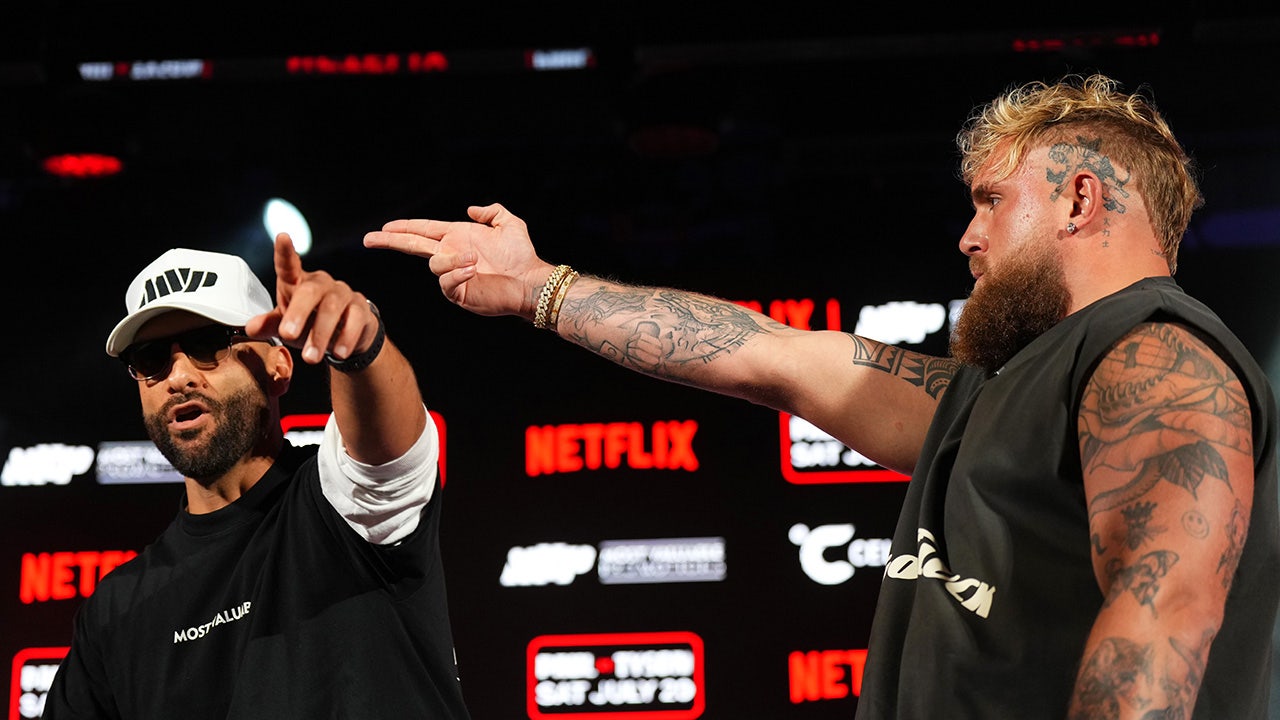
A sports icon came out of retirement last Friday, leading to decibels that are seldom touched at a sporting event, as 58-year-old Mike Tyson, in his first professional fight since 2005, battled Jake Paul in front of more than 70,000 fans at AT&T Stadium in Arlingon, Texas.
But by the middle of the fight, boo-birds rang out in the crowd, and with Paul winning by unanimous decision, accusations of a rigged fight ran all over social media.
If you know Jake Paul, none of that bothers him. He thrives off the hate and has embraced the role of the heel in boxing and life.
“He’s the ‘problem child,’ people want to boo him, and that’s the special sauce that he has,” said Nakisa Bidarian, co-founder of Most Valuable Promotions, in a recent interview with Fox News Digital.
(Cooper Neill/Getty Images for Netflix)
Bidarian and Paul co-founded MVP together three years ago, and their promotions have helped put women’s boxing on the map with two spectacles by Katie Taylor and Amanda Serrano, the second of which was the co-main event last week in Arlington.
Although Bidarian admitted that the 60 million households watching the fight and the largest gate outside of Las Vegas ever was probably more because of Tyson, he said Paul “played a massive role” in the historic event.
It was historic by just about every metric: attendance, viewers, gate, bets placed, social media discussion. But the overwhelming reaction to the fight was that it was a disappointment.
“I don’t care what people have to say. They’re always going to have something to say. It is what it is,” Paul told Fox News Digital after the fight.
Added Bidarian in his interview, “The only win there was if Mike Tyson knocked out Jake Paul, otherwise, the haters would have found a way to complain no matter what.”
But with it being a Paul spectacle, there is, once again, some speculation about the fight being rigged, fixed or staged.
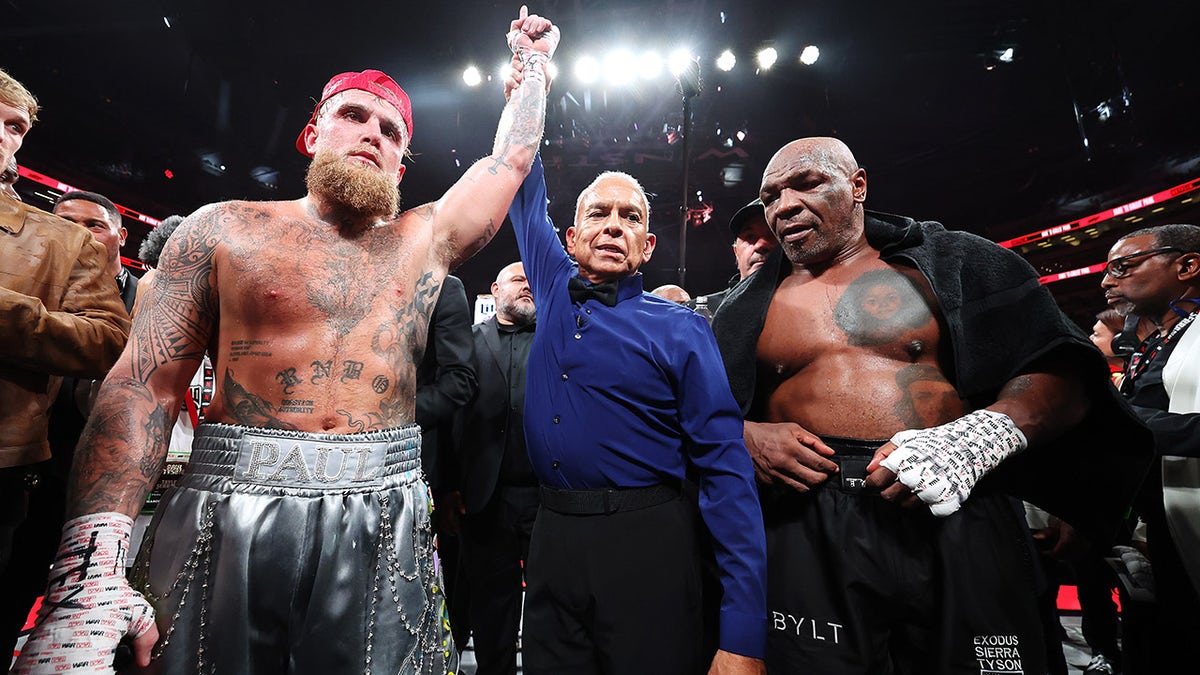
Jake Paul, left, is announced as the winner over Mike Tyson at AT&T Stadium in Arlington, Texas, on Nov. 15, 2024. (Al Bello/Getty Images for Netflix ©2024)
Some fans have tried to point out instances in which the former heavyweight champ could have easily knocked out Paul with an uppercut; some have said that Tyson was biting on his gloves to keep himself from going wild in the ring. Some fans also believe that there was no way a boxer with just four years of experience could have possibly beaten the “Baddest Man on the Planet.”
But all of those claims are BS, Bidarian said.
“In terms of this fight specifically, I will say the following: It was sanctioned by the athletic commission. Our partner was Netflix, who is the biggest media company in America and is a public entity. There was professional sports betting on the event,” Bidarian said. “So, if you were to rig such competition, it is a federal crime. And myself, Jake Paul, Mike Tyson, executives from Netflix would all be going to jail, they would be risking their entire company, and we would be risking our entire lives to do that. It is preposterous that people even suggest that this was in any way anything other than a professional fight. … That was not the case in any Jake fight, let alone this one.”
“This was 100% real from beginning to end,” he added. “It was so real that the guy had an ulcer, and we took a five-month break to give him time to heal the ulcer to be able to perform at his best level. If it was staged, why did we even postpone it? We could have just moved forward with the date: ‘Oh, you have an ulcer, you’re not going to hit each other. It’s going to be fine.’ What are people talking about?”

Mike Tyson and Jake Paul exchange punches at AT&T Stadium in Arlington, Texas, on Nov. 15, 2024. (Tayfun Coskun/Anadolu via Getty Images)
JAKE PAUL-MIKE TYSON SNOOZER DRAWS HARSH CRITICISM: ‘NOT GREAT FOR BOXING’
Even some more high-profile fighters at the top of their game have called out Paul, including Ryan Garcia, lightweight champion Gervonta Davis, heavyweight champion Daniel Dubois and undisputed light heavyweight champion Artur Beterbiev. Bidarian said that “with the exception of one,” Paul is interested in “all” of the inquiries.
“What’s next for Jake is whatever Jake wants it to be. He is the biggest face in all of boxing. … His goal is to be a world champion, so you’ll see us do things that give him those opportunities. And our goal is to think outside the box, do disruptive things and capture the imagination. We did that last Friday, and we’ll continue to do that.”
It’s no secret that Paul is disliked, and many think this is all just a marketing play. It’s no secret that Paul is a marketing whiz, and some of his opponents have been selected rather wisely. But as much of a businessman as Paul may be, Bidarian said he sees him “first and foremost” as a boxer.
“That’s what he dedicates anywhere from 70 to 75% of his time,” Bidarian said.
At the same time, Paul puts emphasis on “professional” in the term “professional boxer.”
“He is the most professional boxer in professional boxing. He is a businessman, he conducts himself like a business, he shows up on time, he delivers every line you need to deliver, he does the promo when no one else wants to. …” Bidarian said. “He knows how to sell. [Dallas Cowboys owner] Jerry Jones said to Jake Paul, ‘Kid, you’re one of the greatest marketers in all of sports.’ And that’s true. He’s four years into this sport, and he’s co-headlining a record-setting event.”
That’s why Bidarian has a rather strong message to those who don’t believe Paul is a serious boxer.
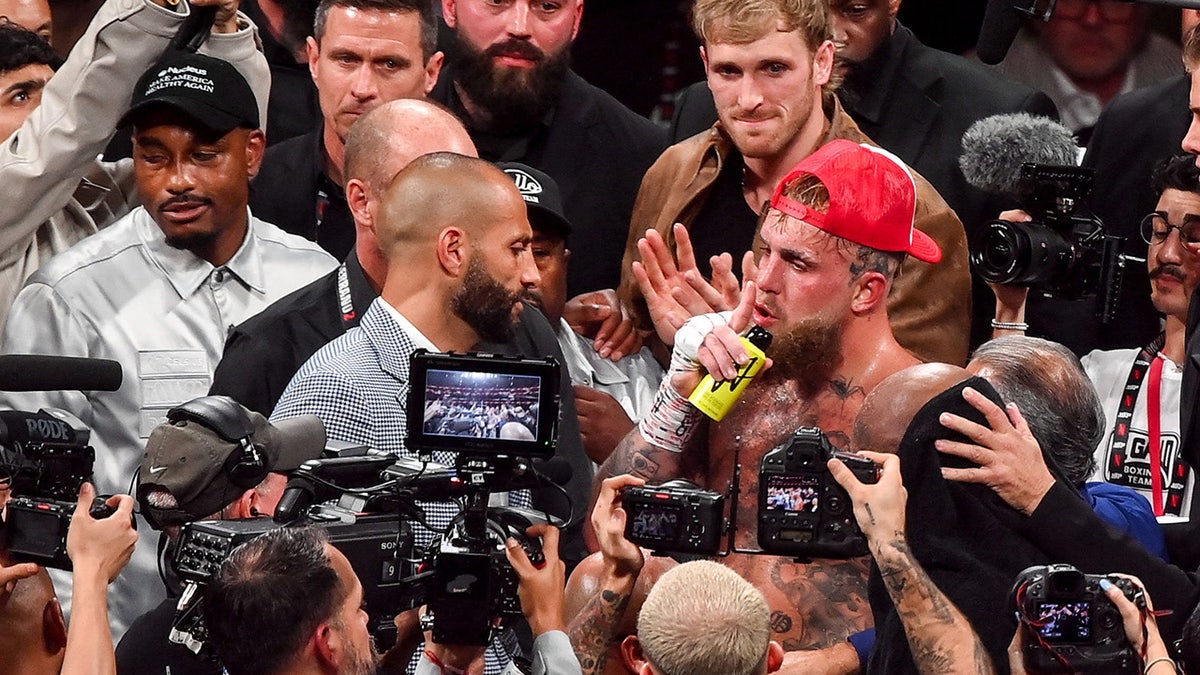
Jake Paul celebrates after his victory over Mike Tyson. (Stephen McCarthy/Sportsfile via Getty Images)
“Show me another athlete, including their amateur or high school career, who has four and a half years of experience that has achieved as much as he has achieved inside and outside of the ring,” Bidarian said. “Even in that performance against Mike Tyson, who is 58, is very unique for someone who is four years into doing a sport. … Jake Paul has gone into the lions’ den and showed that he outboxed a much more skilled boxer in his heyday than Jake Paul, and that’s a lot more impressive than 99% of boxers do in their 10th, 12th, 15th fight.”
“More importantly, Jake Paul has put on for this sport like no athlete has before,” he continued. “He’s put on for the women in this sport, he’s put on for the youth in this sport, he’s put his own money into renovating gyms to give access to young boys and girls to learn about the sport of boxing. He’s partnered with USA Boxing to push amateur interest in the sport.
“He’s the greatest gift the sport has ever seen, in my opinion.”
Follow Fox News Digital’s sports coverage on X and subscribe to the Fox News Sports Huddle newsletter.
Sports
Rams vs. Philadelphia Eagles: How to watch, prediction and betting odds
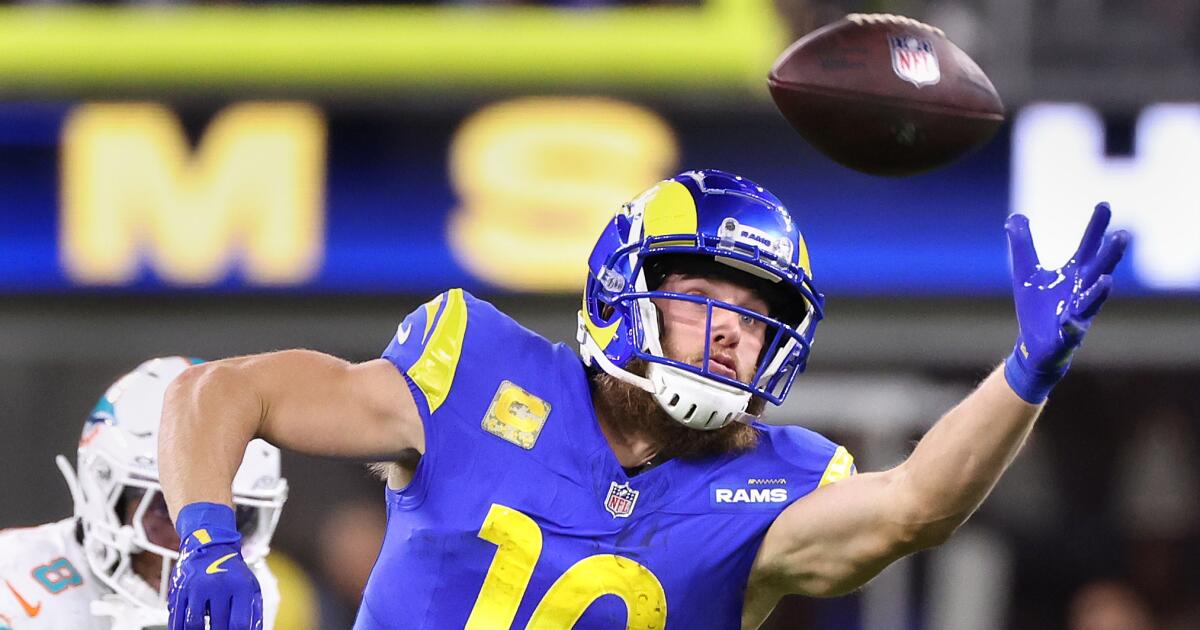
The Rams’ victory over the New England Patriots last Sunday put them back at .500 and kept alive their playoff chances.
Quarterback Matthew Stafford passed for four touchdowns for the second time in four games. The 16th-year pro and coach Sean McVay, the Rams’ play-caller, must be at the top of their games against an Eagles defense coordinated by Vic Fangio, who flummoxed the Rams in 2018 when he ran the Chicago Bears defense.
“He’s arguably the best of this generation,” Rams offensive coordinator Mike LaFleur said, adding, “He’s about as structured as they come in terms of tendencies and percentages. You just can’t pop him on anything. He knows that and we know that.”
Against the Patriots, Rams receivers Puka Nacua and Cooper Kupp each amassed more than 100 yards, and running back Kyren Williams showed signs of returning to his early-season form.
Veteran right tackle Rob Havenstein could return from an ankle injury that has sidelined him for two games, further strengthening a line that gave up no sacks against the Patriots.
The Eagles have given up a league-low 17.9 points a game. They rank second against the pass and seventh against the run. Edge rusher Josh Sweat has six sacks. Veteran cornerback Darius Slay Jr. leads a secondary that includes rookies Quinyon Mitchell and Cooper DeJean.
Quarterback Jalen Hurts leads an offense that also features star running back Saquon Barkley and receivers A.J. Brown and DeVonta Smith. Hurts has passed for 12 touchdowns and rushed for 11. Barkley averages 113.7 yards rushing per game and also is a threat as a receiver.
The Rams have been riding the play of a young defensive line that features edge rushers Jared Verse and Byron Young and linemen Kobie Turner and Braden Fiske.
-
Business1 week ago
Column: OpenAI just scored a huge victory in a copyright case … or did it?
-

 Health1 week ago
Health1 week agoBird flu leaves teen in critical condition after country's first reported case
-

 Business5 days ago
Business5 days agoColumn: Molly White's message for journalists going freelance — be ready for the pitfalls
-
World1 week ago
Sarah Palin, NY Times Have Explored Settlement, as Judge Sets Defamation Retrial
-

 Science3 days ago
Science3 days agoTrump nominates Dr. Oz to head Medicare and Medicaid and help take on 'illness industrial complex'
-

 Politics4 days ago
Politics4 days agoTrump taps FCC member Brendan Carr to lead agency: 'Warrior for Free Speech'
-
/cdn.vox-cdn.com/uploads/chorus_asset/file/25739950/247386_Elon_Musk_Open_AI_CVirginia.jpg)
/cdn.vox-cdn.com/uploads/chorus_asset/file/25739950/247386_Elon_Musk_Open_AI_CVirginia.jpg) Technology4 days ago
Technology4 days agoInside Elon Musk’s messy breakup with OpenAI
-

 Lifestyle5 days ago
Lifestyle5 days agoSome in the U.S. farm industry are alarmed by Trump's embrace of RFK Jr. and tariffs











